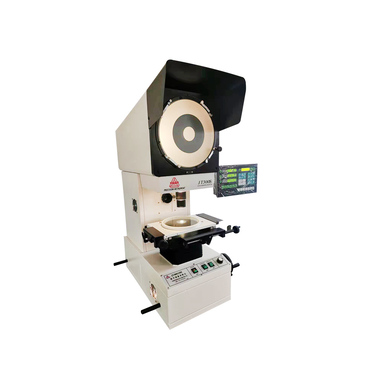Advancements in Optical Coordinate Measuring Machines for Enhanced Precision and Efficiency in Measurements
Understanding Optical Coordinate Measuring Machines Revolutionizing Precision Measurement
In the realm of precision engineering, the role of measurement is paramount. Among the various tools available, the Optical Coordinate Measuring Machine (O-CMM) has emerged as a sophisticated and invaluable asset in industrial applications. An O-CMM utilizes advanced optical technology to determine the coordinates of points in a three-dimensional space, making it essential for quality control, reverse engineering, and product design across various sectors, including aerospace, automotive, and manufacturing.
Principles of Operation
At its core, an Optical Coordinate Measuring Machine operates on the principles of optics and geometry. The device typically incorporates a high-resolution camera or laser system that captures images of the object being measured. These images are analyzed to extract precise coordinates of various points, which can then be used to construct a three-dimensional representation of the object.
The process often begins with the placement of targets or markers on the object’s surface. These markers serve as reference points that the system detects during the imaging process. As the O-CMM moves around the object, it captures multiple images from different angles. The software associated with the machine then processes these images, triangulating the coordinates of the markers and thereby allowing for accurate spatial mapping.
Advantages of O-CMM
One of the most significant advantages of Optical Coordinate Measuring Machines is their non-contact measurement capability. Unlike traditional contact-based measuring tools, which may alter the object’s condition or lead to measurement errors due to physical interactions, O-CMMs maintain the integrity of the part being measured. This feature is particularly beneficial for delicate components or materials that could be easily damaged.
optical coordinate measuring machine

Additionally, the speed at which O-CMMs operate is noteworthy. These machines can gather vast amounts of data in a fraction of the time it would take conventional measurement tools. Quick data acquisition allows manufacturers to streamline their processes and reduces downtime, thereby contributing to higher productivity levels.
Furthermore, O-CMMs provide exceptional accuracy and repeatability. The optical systems employed in these machines can achieve measurement tolerances in the micrometer range, making them suitable for industries that demand the highest standards of precision. This level of accuracy not only ensures that products meet specifications but also enhances the reliability and performance of the end product.
Applications Across Industries
The versatility of Optical Coordinate Measuring Machines means they are used in a plethora of applications. In the aerospace industry, for instance, O-CMMs are used to inspect complex geometries of aircraft components, ensuring safety and compliance with stringent regulatory standards. In automotive manufacturing, they play a crucial role in verifying the dimensions and positions of critical parts, such as engine components and chassis structures.
Moreover, O-CMMs are instrumental in reverse engineering applications, where precise measurements of existing products are required to create updated designs or replicas. This capability is particularly relevant in sectors where legacy equipment needs to be maintained or upgraded.
Conclusion
As technology continues to evolve, Optical Coordinate Measuring Machines stand at the forefront of measurement innovation. Their blend of speed, accuracy, and non-invasive measurement makes them a critical tool in modern manufacturing and quality control processes. As industries increasingly rely on precision engineering, O-CMMs will undoubtedly play a pivotal role in shaping the future of product design and development, ensuring that quality, efficiency, and innovation go hand in hand.
-
Why the Conductor Resistance Constant Temperature Measurement Machine Redefines Precision
NewsJun.20,2025
-
Reliable Testing Starts Here: Why the High Insulation Resistance Measuring Instrument Is a Must-Have
NewsJun.20,2025
-
Flexible Cable Flexing Test Equipment: The Precision Standard for Cable Durability and Performance Testing
NewsJun.20,2025
-
Digital Measurement Projector: Precision Visualization for Modern Manufacturing
NewsJun.20,2025
-
Computer Control Electronic Tensile Tester: Precision and Power for the Modern Metal Industry
NewsJun.20,2025
-
Cable Spark Tester: Your Ultimate Insulation Assurance for Wire and Cable Testing
NewsJun.20,2025
 Copyright © 2025 Hebei Fangyuan Instrument & Equipment Co.,Ltd. All Rights Reserved. Sitemap | Privacy Policy
Copyright © 2025 Hebei Fangyuan Instrument & Equipment Co.,Ltd. All Rights Reserved. Sitemap | Privacy Policy
